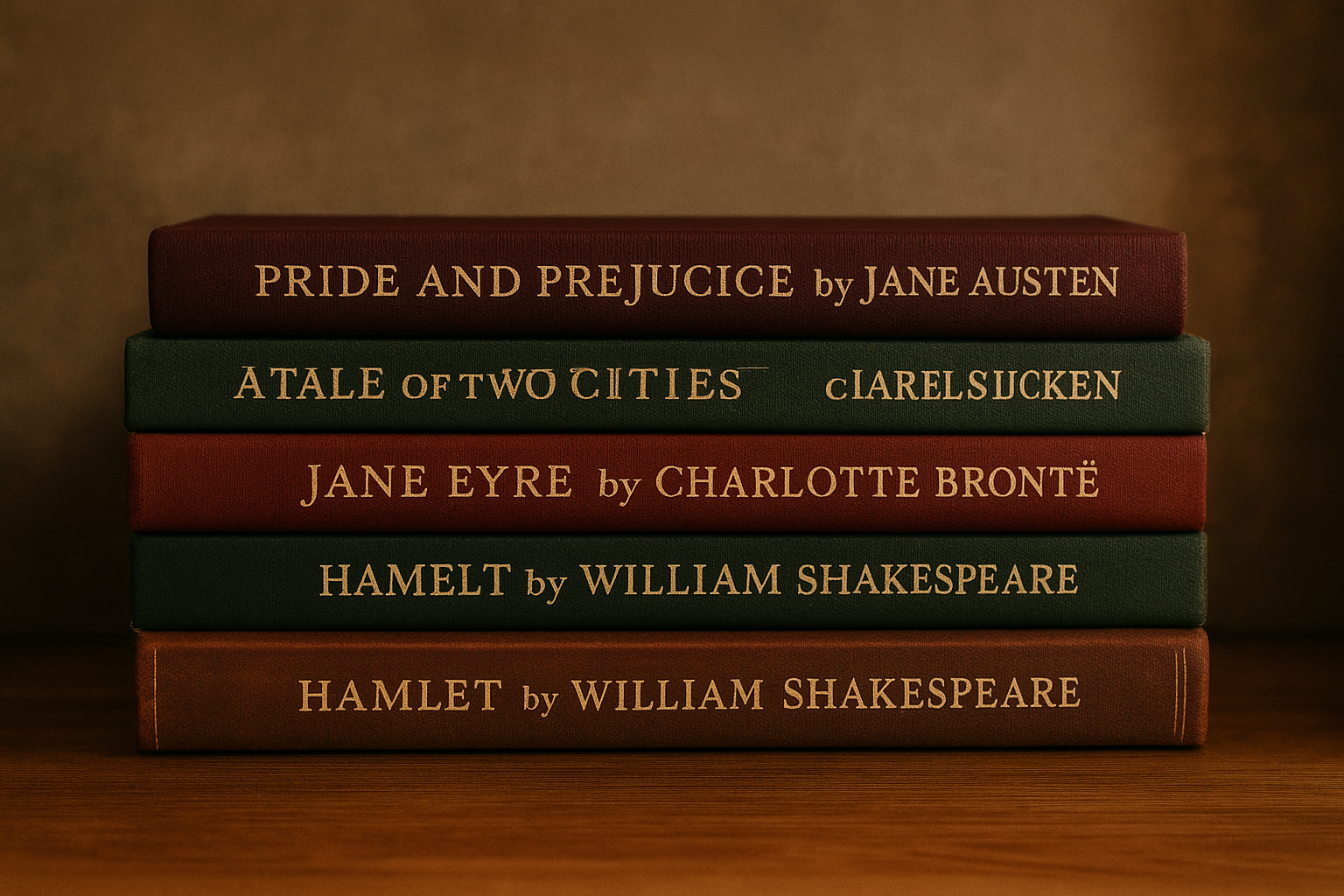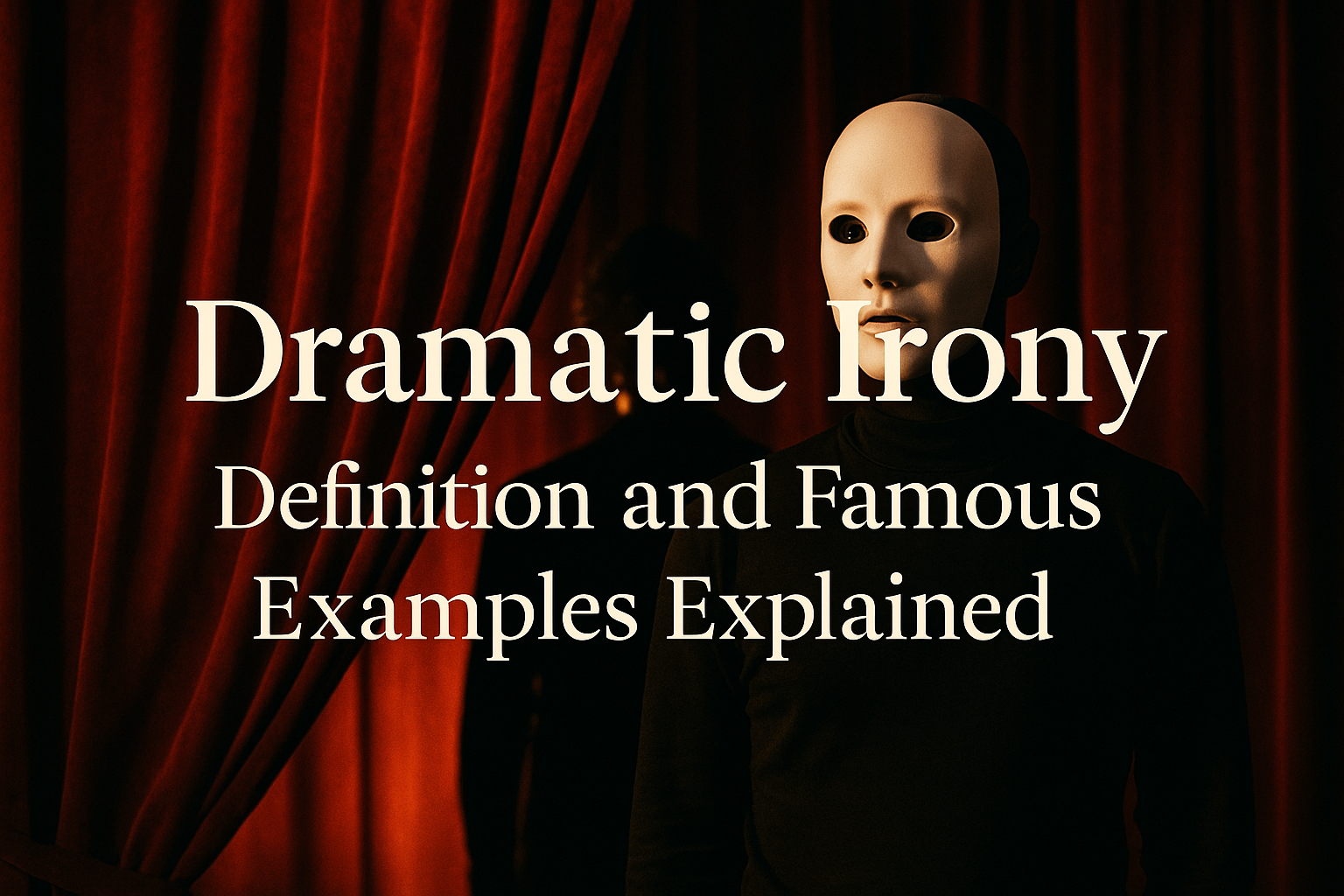Dramatic irony pulls the audience into a story by giving them a clear advantage—they know something the characters don’t. That knowledge creates a constant sense of anticipation, making each scene feel charged with energy. It’s the kind of storytelling move that makes you lean forward, waiting for the moment everything changes. Used in everything from ancient plays to modern blockbusters, it continues to shape how stories hit us, page after page or scene after scene. In the sections ahead, we’ll look at what dramatic irony really is, how it works, and why it keeps showing up in some of the most powerful moments in storytelling.
What Is Dramatic Irony
Dramatic irony is a storytelling technique where the audience knows something a character doesn’t, and that knowledge changes how the scene feels. It creates a situation where the audience watches events unfold with a sense of anticipation, tension, or humor because they understand the truth behind the character’s actions. This contrast between what’s known and what’s believed pulls the audience in and keeps them emotionally connected to the story. Whether the moment leads to laughter or tragedy, dramatic irony adds another layer that makes scenes more powerful and memorable.
How Dramatic Irony Builds Emotion
By giving the audience inside knowledge, dramatic irony creates emotional distance between characters and viewers. That distance pulls people in. Watching someone slowly walk toward a situation you already understand leads to suspense. Seeing someone trust another person you know is lying makes you anxious. Laughing at someone’s mistake when you already saw the truth makes it more amusing.
This isn’t just about tension. It creates emotional contrast. The difference between what’s true and what’s believed gives the audience a moment of clarity and power over the story, even if only for a short time.

Types of Dramatic Irony
Dramatic irony doesn’t always show up in the same way. Writers shape it to match the mood of the story they’re telling. Sometimes it hits hard and makes you feel the weight of a character’s mistake, and other times it’s light and funny, built around harmless misunderstandings. Here are three types you’ll often come across, each adding something different to the experience.
Tragic Dramatic Irony
This form is common in serious stories, especially those filled with sorrow or loss. The audience already knows what’s going to happen—usually something unfortunate—but the character hasn’t figured it out yet. That creates a strong emotional reaction as we watch them make choices that bring them closer to a painful outcome. Their words and actions carry extra weight because we already understand where it all leads. Watching a character walk toward disaster while still full of hope or confidence is what makes tragic dramatic irony so powerful.
Comic Dramatic Irony
In lighter stories or comedies, dramatic irony becomes a tool for laughs. The audience sees the mix-up or misunderstanding coming from a mile away, but the character is completely unaware. That cluelessness leads to funny situations, awkward moments, and punchlines that land harder because we already know the truth. It’s like watching someone confidently give the wrong answer—they think they’re spot on, and that’s what makes it hilarious. Sitcoms, animated shows, and romantic comedies often rely on this version of irony to keep things fun and energetic.
Subtle Dramatic Irony
Not all dramatic irony needs to shout. Sometimes it’s soft, almost hidden, but just as effective. In these cases, the audience might be let in on a small but important detail that gives them a different perspective. The character might never learn the truth, but the audience carries that knowledge to the very end. This type works well in slower-paced stories, dramas, or emotional films where the impact builds over time. It doesn’t always create a big twist—it’s more about giving the viewer a deeper way to see what’s happening.
Each of these types adds its own flavor. Whether it’s meant to make people laugh or leave them speechless, dramatic irony always finds a way to leave a mark.
Examples of Dramatic Irony in Classic Literature
Dramatic irony has been a tool for centuries. Some of the most respected stories rely on it for emotional depth. Here are a few famous cases:
Oedipus Rex by Sophocles
The audience knows Oedipus has fulfilled a terrible prophecy. He, on the other hand, is still looking for answers. This makes every discovery more intense because we already know where it leads.Romeo and Juliet by William Shakespeare
Romeo believes Juliet is dead, but the audience knows she’s not. Watching him act on that false belief makes the ending heartbreaking in a way that’s impossible to forget.The Great Gatsby by F Scott Fitzgerald
Readers see how Gatsby’s dream is built on false hope long before he does. That gap makes his efforts feel even more tragic.
Each of these examples uses dramatic irony to shape how the audience reacts to every decision and conversation.
Famous Movies That Use Dramatic Irony
Modern films also use dramatic irony in powerful ways. The format may be different, but the emotional punch is still strong. Here are a few examples that show how well it works:
Titanic
Viewers already know the ship will sink. This makes each calm moment on the deck feel heavy with unspoken tension.Toy Story
Buzz Lightyear believes he is a real space ranger. The audience knows he’s just a toy. That belief leads to scenes that are both funny and touching.The Truman Show
Truman doesn’t realize he’s living in a TV show. Viewers watch him question reality while already knowing the truth.
These films rely on dramatic irony to shape how scenes feel. Instead of just watching events unfold, the audience is always one step ahead.
Why Writers Keep Using Dramatic Irony
Dramatic irony continues to appear in books, films, and shows because it keeps people watching and reading. It builds a special connection between the audience and the story. That sense of being in on the truth adds a layer of meaning to every scene.
Here are some reasons it works so well:
It creates suspense as we wait for characters to figure things out
It adds humor by showing the difference between belief and truth
It increases emotional connection by showing consequences ahead of time
It highlights flaws, strengths, and choices in ways that wouldn’t work otherwise
This is one of those techniques that can make a scene stick with someone long after it ends.
Classic Books That Use Dramatic Irony
If you’re interested in seeing more of this tool in action, here are a few more stories worth reading:
Macbeth by William Shakespeare
Pride and Prejudice by Jane Austen
A Tale of Two Cities by Charles Dickens
Jane Eyre by Charlotte Brontë
Hamlet by William Shakespeare
Each of these stories uses dramatic irony in its own way to shape scenes and influence how readers feel about the events.
Popular Films That Rely on Dramatic Irony
Want more examples from modern entertainment? These films use dramatic irony to great effect:
Forrest Gump
The Sixth Sense
Shrek
Monsters Inc
Frozen
In every case, the audience knows something important before the characters do. That knowledge gives each moment a different kind of weight.

How to Use Dramatic Irony in Writing
Writers can use dramatic irony to make scenes more interesting. The trick is giving the audience a small advantage over the characters. It doesn’t have to be a huge secret. Sometimes, one small detail is enough to shift how everything feels.
Here’s a simple list of how to use it well:
Let the audience know a fact early
Show the character acting without that knowledge
Build moments where the truth slowly closes in
Keep the tension going until the moment of realization
It works best when there’s something meaningful at stake. Whether it’s emotion, danger, or laughter, the gap between what’s known and what’s believed gives stories more impact.
Final Thoughts on Dramatic Irony
Dramatic irony works because it creates a space between what’s true and what’s believed. That space gives the audience more to feel. It builds tension, humor, or sadness in ways that other techniques can’t match. From ancient plays to animated movies, this storytelling tool keeps showing up for a reason. It helps scenes feel sharper, more emotional, and harder to forget.




